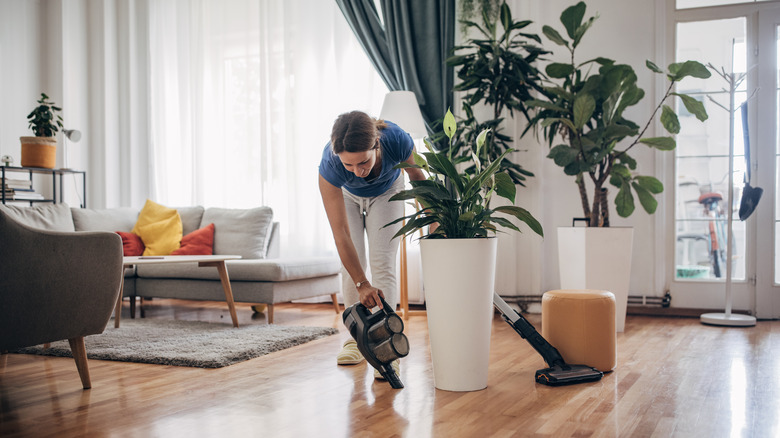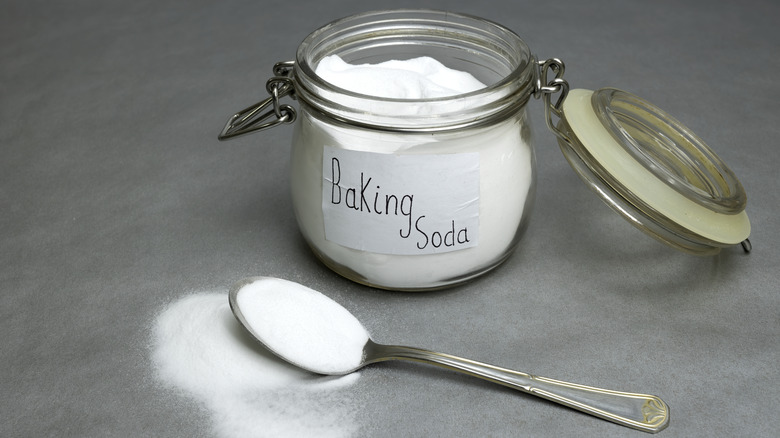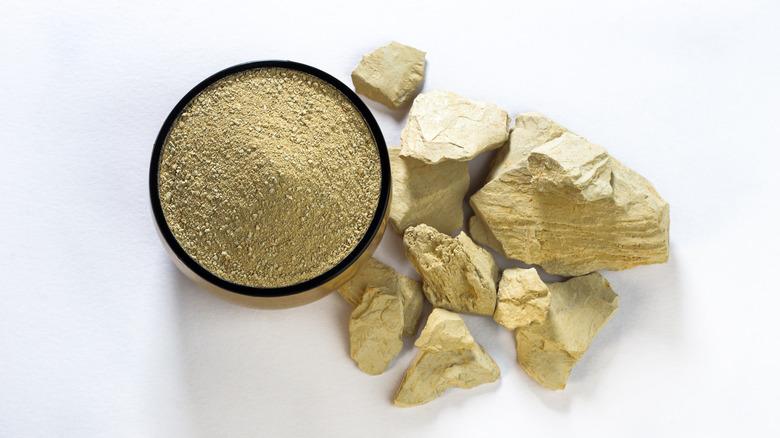What To Do If You Get Slippery Oil On Wood Floors
When you're faced with an oil spill on your wood floors, it might seem like a dire situation requiring specialized intervention. However, you've got more control over the issue than you may think. With some common household supplies, such as kitty litter, baking soda, tri-sodium phosphate, or Fuller's earth, you can effectively manage the situation. It's more than a cosmetic issue; leaving oil on wood floors poses a safety risk. The slippery surface can be hazardous, and there's also the risk of the oil penetrating the wood fibers, leading to challenging stains that could become permanent fixtures.
But you're not powerless; acting swiftly and effectively with cleaning is the key to reclaiming your wood floors to their former glory. Understand that the oil doesn't just mar the wood's appearance; it can compromise the wood's structural integrity over time. The wood can absorb the oil, leading to swelling or warping that may eventually demand expensive repair work. Additionally, if not cleaned promptly, the oil forms a grimy layer that attracts dirt and dust, making the floor even more unsightly and difficult to clean in the long run. In short, taking prompt action is about minimizing immediate and future risks. Here's the best approach to cleaning oil on wood floors.
Use kitty litter or baking soda
Begin by blotting up the oil from the wood floors using paper towels or a soft cloth. Be careful not to rub the oil into the wood — you aim to lift it off the surface. Once you've removed as much oil as possible, sprinkle an absorbent material like cat litter or baking soda over the affected area. Let it sit for 30 minutes to soak up any remaining oil. Next, carefully sweep up the absorbent material and discard it. Now it's time to vacuum. Ensure you vacuum the spill area from different angles, removing all absorbent material completely. After vacuuming, it's time to whip up a cleaning solution for a deeper clean. Grab a bowl and mix 1 teaspoon of dishwashing detergent with 4 cups of water. Use a mop or sponge to scrub the area, applying moderate pressure to ensure you're reaching into the wood grain.
Wrapping up the cleaning process is equally important. Wipe away all the soap suds using a soft cloth damp with clean water, followed by a dry cloth. This step isn't just about aesthetics; it's about preventing longer-term damage. Any remaining moisture can lead to the wood warping or swelling, causing irreversible damage. Make sure to dry the area as thoroughly as possible. You can either open a window for better air circulation or use a fan. If you live in a particularly humid environment, consider using a dehumidifier to help suck out the extra moisture and ensure the wood floors dry completely.
Use tri-sodium phosphate (TSP) or Fuller's earth
When battling older or more stubborn oil stains on your wood floors, tri-sodium phosphate (TSP) can be your saving grace. TSP is a strong cleaner, and safety precautions are a must. Before diving into the cleaning process, putting on rubber gloves and make sure the room has good ventilation. To get started, dampen a cloth with TSP and work it into the oil stain, following the direction of the wood grain for effective results. For those extraordinarily stubborn stains, turn to Fuller's earth, a clay material that is excellent at absorbing oils. Sprinkle the powder over the stain and let it sit for about 10 minutes. Still seeing the stain? It might be time to up the ante. Create a paste by combining Fuller's earth with a bit of water and spread it over the problem area. Let this paste sit for a full 24 hours.
When it comes to removing Fuller's earth, the method depends on how you applied it. If you used the powder form, a stiff-bristled brush or cloth should suffice for the job. On the other hand, if you've gone the paste route, a palette knife becomes your tool of choice. Exercise caution to avoid scratching your precious wood floors while scraping off the dried paste. As the final touch, mop the wood floor with a standard household cleaner to eliminate all residues.


